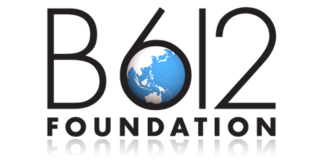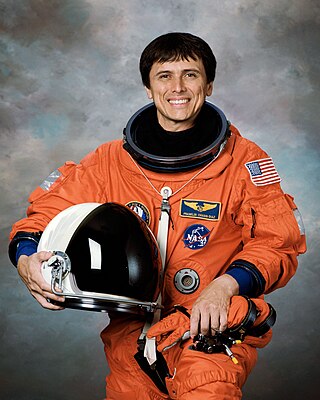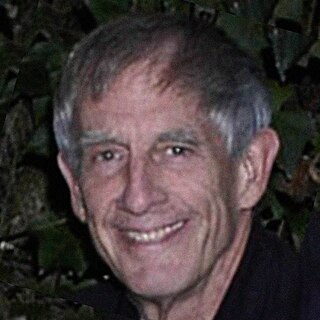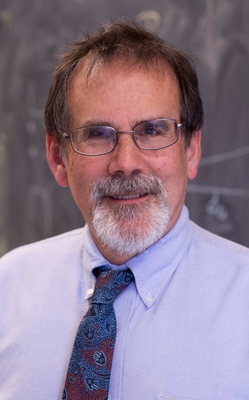
The B612 Foundation is a private nonprofit foundation headquartered in Mill Valley, California, United States, dedicated to planetary science and planetary defense against asteroids and other near-Earth object (NEO) impacts. It is led mainly by scientists, former astronauts and engineers from the Institute for Advanced Study, Southwest Research Institute, Stanford University, NASA and the space industry.

Taylor Gun-Jin Wang is a Chinese-born American scientist and in 1985, became the first person of Chinese origin to go into space. While an employee of the Jet Propulsion Laboratory, Wang was a payload specialist on the Space Shuttle Challenger mission STS-51-B.

Franklin Ramón Chang-Díaz is an American mechanical engineer, physicist, and former NASA astronaut. He is the sole founder and CEO of Ad Astra Rocket Company as well as a member of the Cummins' board of directors. He became an American citizen in 1977.

Frederick Hamilton "Rick" Hauck is a retired captain in the United States Navy, a former fighter pilot and NASA astronaut. He piloted Space Shuttle mission STS-7 and commanded STS-51-A and STS-26.

Harold (Hal) Masursky was an American astrogeologist.

Eugene Newman Parker was an American solar and plasma physicist. In the 1950s he proposed the existence of the solar wind and that the magnetic field in the outer Solar System would be in the shape of a Parker spiral, predictions that were later confirmed by spacecraft measurements. In 1987, Parker proposed the existence of nanoflares, a leading candidate to explain the coronal heating problem.

The Space Sciences Laboratory (SSL) is an Organized Research Unit (ORU) of the University of California, Berkeley. Founded in 1959, the laboratory is located in the Berkeley Hills above the university campus. It has developed and continues to develop many projects in the space sciences, including the search for extraterrestrial life (SETI@home). The laboratory have built instruments to fly on more than 100 satellites and flown more than 150 balloons to "measure electric fields, auroral x-rays, hard x-rays and gamma rays, cosmic rays and the cosmic microwave background." The lab has also built and flown two dozen rockets to measure "auroral particles, UV emissions, and solar flare nuclei." It currently has projects categorized into planetary projects, geospace projects, solar and heliophysics projects, astrophysics and exoplanets projects, which are accompanied by a missions operations system, an engineering division and an information lab.

George Robert Carruthers was an African American space physicist and engineer. Carruthers perfected a compact and very powerful ultraviolet camera/spectrograph for NASA to use when it launched Apollo 16 in 1972. Carruthers was inducted into the National Inventors Hall of Fame in 2003, and in 2011 he was awarded the National Medal for Technology and Invention.

Space Center Houston is a science museum that serves as the official visitor center of NASA Johnson Space Center in Houston, Texas. It was designated a Smithsonian Affiliate museum in 2014. The organization is owned by NASA, and operated under a contract by the nonprofit Manned Spaceflight Education Foundation, a 501(c)(3) organization. The Johnson Space Center is the home of Mission Control and astronaut training.

Michael David Reynolds was an American author and educator who served as professor of astronomy at Florida State College at Jacksonville in Jacksonville, Florida. He served as the director of Chabot Space and Science Center in Alameda County, California. Reynolds was best known for his work in science education, both in lecture halls and less formal settings. He also participated in astronomy and space exploration outreach.
Science outreach, also called education and public outreach or simply public outreach, is an umbrella term for a variety of activities by research institutes, universities, and institutions such as science museums, aimed at promoting public awareness of science and making informal contributions to science education.

Charles Kohlhase worked for forty years at NASA/JPL leading the design of several robotic deep-space planetary missions. He is also an author, game developer and lecturer.

Stamatios (Tom) Mike Krimizis is a Greek-American scientist in space exploration. He has contributed to many of the United States' unmanned space exploration programs of the Solar System and beyond. He has contributed to exploration missions to almost every planet of the Solar System. In 1999, the International Astronomical Union named the asteroid 8323 Krimigis in his honor.

Scott J. Bolton is an American theoretical and experimental space physicist. He is an associate vice president of the Southwest Research Institute Space Science and Engineering Division. His research area is planetary sciences with a focus on the giant planets and the origin of the solar system. Previously serving as a member of the Galileo and Cassini–Huygens missions, Bolton became the Principal Investigator of Juno, a New Frontiers program mission to Jupiter which began primary science in 2016.

David John McComas is an American space physicist, Vice President for Princeton Plasma Physics Laboratory, and Professor of Astrophysical Sciences and leads the Space Physics at Princeton Group at Princeton University. He had been Assistant Vice President for Space Science and Engineering at the Southwest Research Institute, Adjoint Professor of Physics at the University of Texas at San Antonio (UTSA), and was the founding director of the Center for Space Science and Exploration at Los Alamos National Laboratory. He is noted for his extensive accomplishments in experimental space plasma physics, including leading instruments and missions to study the heliosphere and solar wind: IMAP, IBEX, TWINS, Ulysses/SWOOPS, ACE/SWEPAM, and Parker Solar Probe. He received the National Academy of Science's 2023 Arctowski Medal, European Geosciences Union 2022 Hannes Alfven Medal, SCOSTEP 2022 Distinguished Scientist Award, a NASA Exceptional Public Service Medal in 2015, the 2014 COSPAR Space Science Award, and the American Geophysical Union 1993 Macelwane Medal.

Craig Edward DeForest is an American heliophysicist and the former Chair of the American Astronomical Society's Solar Physics Division. He is Director of the Department of Solar and Heliospheric Physics at the Boulder, Colorado offices of the Southwest Research Institute and holds an adjunct faculty position at the University of Colorado, Boulder. His wide-ranging contributions to the field of experimental astrophysics of the Sun include: early work on the MSSTA, a sounding rocket that prototyped modern normal-incidence EUV optics such as are used on the Solar Dynamics Observatory; his discovery of sound waves in the solar corona in 1998; standardization of computer vision techniques that are used to measure and track magnetic fields on the solar surface; co-invention with colleague Charles Kankelborg of the fluxon semi-Lagrangian approach to numerical MHD modeling; and pioneering work on quantitative remote sensing of the solar wind via Thomson scattered light.
Lynn Cominsky is an American astrophysicist and educator. She was the Chair of Astronomy and Physics at Sonoma State University in Rohnert Park, California from August 2004 through August 2019. She is currently the Project Director for the NASA Education and Public Outreach Group.
The Bartol Research Institute is a scientific research institution at the Department of Physics and Astronomy of the University of Delaware. Its members belong to the faculty of the University of Delaware and perform research in areas such as astroparticle physics, astrophysics, cosmology, particle physics, and space science.

Craig Allen Kletzing was an American plasma physicist and professor at the University of Iowa, known for his work in space plasmas and laboratory plasmas. He conducted pioneering work in kinetic Alfvén waves, developed instruments for various NASA missions, and taught college level physics.















